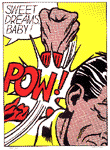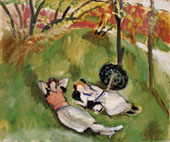Mixtape Marathon |
|

"In vacant or in pensive mood..." I am: Bekah; 24; Law Student / Favorite Things: Carbs (so there!), Johnny Damon, Smiling at babies, Grilled cheese, Comfortable silence / Favorite Supreme Court Justice: Brennan / Favorite Wilson: Owen by an inch / Today's Special: Song: Elliott Smith, "Bled White"; Quote: "You know, there's like a butt-load of gangs at this school. This one gang kept wanting me to join because I'm pretty good with a bowstaff." Please love me: mmbekah@yahoo.com 
February 2003 March 2003 April 2003 May 2003 June 2003 July 2003 August 2003 September 2003 October 2003 November 2003 December 2003 January 2004 February 2004 March 2004 April 2004 May 2004 June 2004 July 2004 August 2004 September 2004 October 2004 November 2004 December 2004 January 2005 September 2005 |
Thursday, March 27, 2003
A few weeks ago, I wrote a general guide to quoting. Now I want to address something even nearer and dearer to my heart: The art of the mixtape. I cannot stress my seriousness about this subject enough. The mixtape and its modern incarnation, the mix cd, are two of the most constant joys in my life. Several attempts have been made to describe the essence of a good mixtape. Most memorable for me is the scene in High Fidelity when Rob suggests that you have to start off strong to catch attention, then take it up a notch, and then cool it off a notch because “you don’t want to blow your wad.” The Promise Ring also offer some insight into the subject in their aptly titled song, Make Me a Mixtape: “Make me a mixtape / Something old and something new / Something I said or that we did that reminds me of you / Make me a mixtape that makes me yours / Don't leave out Husker Du / Put something on that The Cars did in 1982 / It makes me yours.” This explanation is even more effective than the one in High Fidelity because it vividly describes how personal mixtapes should be. (Incidentally, this song makes a good, strong addition to a mix in its own right. I used it as the second song in a cd I made for my sister in order to give the mix an energetic punch right at the beginning. When she was listening, she probably thought, “Hark! I should pay attention now, for this shit is going to be good.”). Keeping these foundations in mind, I will now unveil my somewhat comprehensive guidelines for making the perfect mix. 1. Tape or cd? Make an educated choice. Although cds may appear to have completely taken over the market, there is a strong subculture of nostalgic, die-hard tape fans. The decision for the mix-maker is one of purpose. If you are making a mix for someone who is a little earthy, drives an old station wagon, or hasn’t gotten into “the whole cd thing,” go with the tape. If you are making a mix for a tech-savvy hipster, a “sound quality” snob, or someone who doesn’t remember what a walkman is, go with the cd. These are just general rules: sometimes a tape is more personal; sometimes a cd is more practical. Go with your instinct. Personally, I make tapes when 1) I don’t have the means to make a cd, 2) I am making a road trip or exercise mix (see rule #7), or 3) I am in high school. Note: The third category is no longer viable. 2. Live by the three F’s: Fusion of Form and Function. A mixtape should be a cohesive unit. There are no requirements as to what type of music to include (as long as it doesn’t suck—see rule #4), but it is important that the songs you do choose fit with each other, and that they uphold the function of the mix. This is not to say the mixes cannot be eclectic, including both Blackalicious and Whiskeytown, Radiohead and Hot Water Music, or even The Shins and Jefferson Starship. I merely remind you that if you do choose to illustrate your varied musical interests, do so tastefully. The rules that follow will elaborate on this basic tenet. 3. Visualize a craggy mountain range. A good mixtape is not a plateau or a gradual incline. We are not climbing Mt. Everest here: no one wants to wait until the end of the tape for the climax. A good mixtape is like an interval workout. It has anywhere from 5 to 10 summits, all interspersed over the duration of the tape. I usually think of summits as what I feel are the strongest songs on the tape. This doesn’t have to mean loud or upbeat—a strong song is one that you have solidly adored for some time, or that would cause an acute ear to perk up. These songs anchor the mix, and allow for some underdogs to make safe appearances. A balance of slower and faster songs is also key, although it should not be a predictable alternating pattern. I usually like one or two slower songs at the end as a little bit of a fade out, but I wouldn’t go so far as to make that a black letter rule. 4. Do not include bad songs. Seems simple, right? Wrong. Sadly, most mixtapes and mix cds violate this rule in anywhere from one to all of the songs. And sadly, this is the one rule that is hardest for me to articulate without operating on a case by case basis. If you have to think about it, the song probably sucks. If you wish to procure some advice, I or one of my trusted colleagues would be happy to inform you as to strength or suckage of your particular choices. 5. Tone down the ego. This rule is only true if you’re making your mixtape for someone else (which really should account for most of your mixing time). A mixtape should always give the recipient an idea of the maker’s personal musical atmosphere. The all-important caveat, however, is that the maker should always anticipate what, within that musical atmosphere, the recipient would enjoy. You want to appeal to what you know they like, and introduce them to songs you think they would or should appreciate. News flash kids: It’s not all about you. 6. Never guess or lie. You know the drill. Everyone’s talking about a particular song or band. You want to be in on the action. So even though you don’t really like a song, you put it on your mix to look artsy and cool. Bad idea. People will realize quickly that there is something off, and believe me, one off song can ruin the whole thing. Also, never ever think to yourself, “Well, I don’t like this song much now, but maybe if I put it on the mix I’ll grow to like it.” You’re not fooling anyone. 7. Embrace thematic mixes. Themes can be a welcome source of inspiration for a mix. They can refer to the activity the mix is for (e.g., a road trip or exercise), the topic of the songs (e.g., songs about rain), or the person/situation occasioning the mix (e.g., “senior year” or break-up mixes). I’ve been known to make R.E.M.-themed mixes, which are obvious exceptions to rule #8 below. Working with a theme narrows your song options, but still allows for a good deal of creativity. 8. “Re-mix” sparingly. Re-mixing refers to two distinct practices. The first is using the same artist more than once on the same mix, which is rarely acceptable. If the band has had a long and diverse musical career, it is sometimes ok to put a representative song from two different periods. Also, if the lead singer of a band goes on to do solo work, it is ok to represent both phases of his career (like Pavement and Steven Malkmus or Old 97’s and Rhett Miller). The second meaning of “re-mixing” is giving the same cd to two different people. Making a cd for one person and then giving it to someone else later is sneaky and impersonal, but if you’re careful you can get away with it once in a while. 9. Avoid most live recordings. This rule has several exceptions, but I list it anyway because there is nothing more disruptive on a mix than a two minute long interview or long, drawn out applause. The songs need to flow, and live songs can be a huge distraction. If the applause and talking are minimal, it is ok to use a live song on occasion, especially if it is a better or more interesting version than the original. But a 20 minute version of Phish's Dog Faced Boy is totally unacceptable. 10. Remember that there is a huge learning curve. Don’t be ashamed if you feel that your mixes are less than stellar. I don’t like to admit this, but it wasn’t so very long ago that I included The B-52’s and Shania Twain in my mixes. (Think of those tapes as Bekah: The Lost Years). I am still honing my craft. The perfect mix is a moving goal: You may never reach it, but if you keep improving, you can get pretty damn close. |

